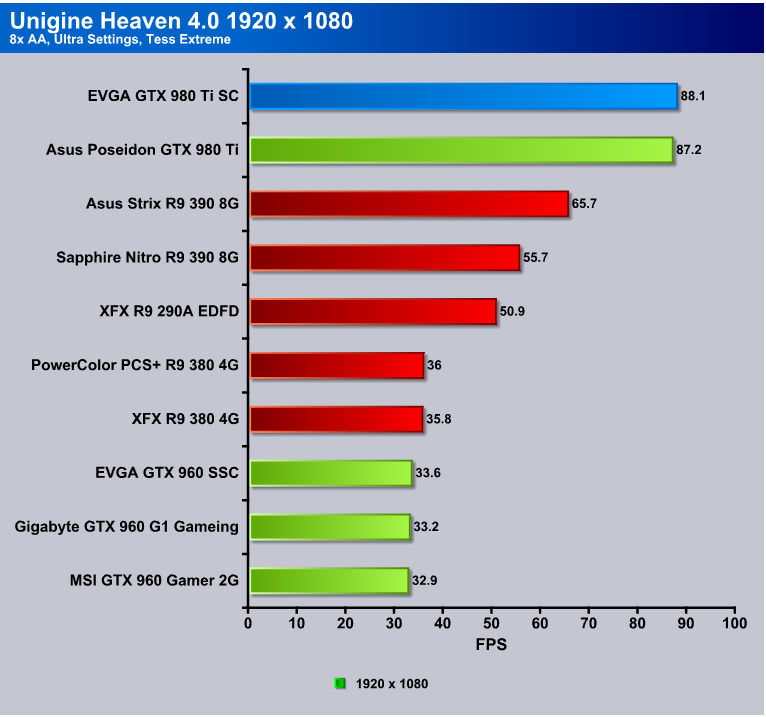
- #980 ti metro last light benchmark 1080p#
- #980 ti metro last light benchmark driver#
- #980 ti metro last light benchmark windows 10#
There’s a lot to digest in that little table-and a lot of blood, sweat, and cursing in there as well, if you look closely-so let’s start with the easy stuff. Similarly, we've marked 3-way scores in red where performance is less than the 2-way result-because nobody shelling out for 3-way SLI wants to see negative scaling! Three’s a Crowdįor the following tables, we've bolded results in the 3-way columns where scaling is greater than 200%, meaning it's higher than what two GPUs could possibly achieve. There will still be bottlenecks that prevent scaling to an arbitrary number of CPU cores and GPUs, but at the very least, we should see better scaling with both CPU cores and number of GPUs than we’re currently seeing with DX11.
#980 ti metro last light benchmark driver#
Again, DX12 with its multi-threaded driver model should help quite a bit, as it means having a multi-core CPU is like adding additional head chefs, each with a little kitchen to manage. One head chef (i.e., CPU) in a kitchen with six assistants (let’s say six assistants equals one GPU) is manageable one head chef with 60 assistants waiting for input is a recipe for disaster. There is an optimal number of stages for a given task go beyond that point and rather than helping, you create chaos. Think of it as an assembly line, where a task gets broken down into increasingly smaller parts. The net result is that if you’re running at resolutions where you’re already bottlenecked by the CPU (e.g., 1920x1080), adding another GPU to the mix and making the CPU have to do that much more work doesn’t help.

Adding more GPUs creates more work for the system as a whole, and the CPU in particular has to spend more time splitting up the workload. In fact, in some cases we might even see performance decreases when moving beyond two GPUs. That looks pretty grim, and as we’ll see below, the results, for 3-way SLI at least, aren’t far off. If we plot the observed improvement against the theoretical improvement at the various resolutions, and make an educated prediction, it would look something like this:
#980 ti metro last light benchmark 1080p#
With 2-way SLI, we saw improvements of up to 95 percent (Tomb Raider at 4K), but overall, the average increase in frame rates at 4K was only 72 percent-and at QHD and 1080p the improvements were even lower. At best, the rendering work still needs to be divvied up among the GPUs and then the cards need to coordinate sending frames out to the displays.
#980 ti metro last light benchmark windows 10#
There’s a good chance we’ll see better scaling when Windows 10 is launched and we start seeing the first DX12 games, but there will always be additional overhead when running multiple graphics cards.

Of course, we don’t live in a perfect world, especially in this pre-DX12 era of graphics APIs. And again, in an ideal case, adding a third GPU would end up tripling the performance of a single GPU, or improve performance by 50 percent over two GPUs.

If you overclock the GeForce GTX 980 Ti you’ll see that card reaching over 4,700 points on this benchmark.In a perfect world, doubling the number of GPUs you’re running would result in a doubling of performance. With the Fury X card overclocked as high as we could get it with stability we hit 4,140 points, which is just higher than the stock score of 4,023 points on the NVIDIA GeForce GTX 980 Ti reference card.

Those scores are pretty close and an overclocked Radeon R9 Fury X was able to top a stock GeForce GTX 980 Ti.īenchmark Results: The 3DMark Fire Strike Ultra ‘4K’ benchmark has the PowerColor Radeon R9 390X scoring 2996 points and the AMD Radeon R9 Fury X coming in at 3941 points, so there is a pretty big performance gap between the R9 390X and the Fury X. Fire Strike uses a multi-threaded DirectX 11 engine to test DirectX 11 hardware.īenchmark Results: The 3DMark Fire Strike Extreme benchmark had the AMD Radeon R9 Fury X video card coming in with an overall score of 7,197 and the NVIDIA GeForce GTX 980 Ti scored 7,489. Use Fire Strike to test the performance of dedicated gaming PCs, or use the Fire Strike Extreme preset for high-end systems with multiple GPUs. 3Dmark Fire Strike Benchmark Results – For high performance gaming PCs


 0 kommentar(er)
0 kommentar(er)
